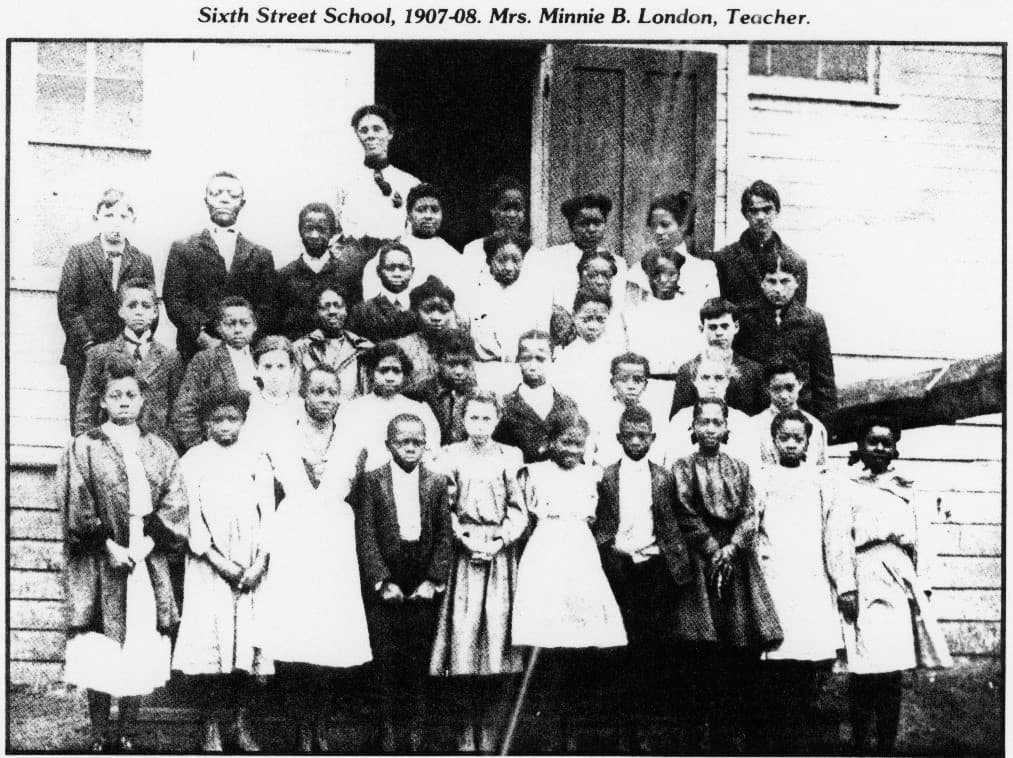This post by IWA Graduate Assistant, Erik Henderson, is the eighth installment in our series highlighting African American history in the Iowa Women’s Archives collections. The series ran weekly during Black History Month, and will continue monthly for the remainder of 2020.
The once prosperous coal mining town, Buxton, Iowa, approximately thirty minutes southwest of Oskaloosa was the home of hardworking Black citizens from the Virginia to immigrants from Sweden and Slovakia. The Reuben Gaines memoir from the Frances Hawthorne collection details wise anecdotes, notable events such as Madame C.J. Walker visiting Buxton and the rise and fall of this ghost town. The memoir was donated to the Iowa Women’s Archives by Hawthorne in 2003, a part of research material on Buxton to uncover the history of Black Iowans. Some of the stories shared by Reuben Gaines Jr will not only entertain you with their delivery, tone, and descriptiveness, but give readers a diverse depiction of the town’s people and a vision for what life could be like without biases.

Black Americans being the majority populace of Buxton, coexisting alongside White Americans, with no true sense of segregation or discrimination made this town noteworthy. In the 1905 census, the town boasted about the community having 2,700 Black Americans and 1,991 White Americans. Buxton was founded in 1873 by the Consolidation Coal Company (CCC) that worked for the Chicago and Northwestern Railroad. Benjamin Buxton was the namesake of and main planner of the town of Buxton, then he took over as superintendent from his father, John Buxton, in 1896 until 1909.
The town thrived in its early days on the high demand for coal. Buxton’s community members enjoyed their days off by being together. Parades and large groups of people between Monroe Mercantile Store and the YMCA was something of the norm. Gaines remembers the good times they had at parties on weekends “on this Saturday night we had planned a party with music; dancing with card playing with a prize being contributed to the best Bridge Playing couple (21).” Then later reflects on one occasion a young fellow, Scottie Bolton, took on the nickname “the human fly (25)” after climbing to the top of the YMCA building with no ladder or support.

The life expectancy of the miners was shortened due to days being long and dangerous. However, to the citizens of Buxton, the risk was worth the reward. When Reuben first began work at the CCC, he got a piece of steel struck in his right eye and “every time I would lower the lid of my eye, it would scrape and cut going up or down (26).” Gaines Jr. later got it removed in Albia, a town not too far from Buxton, because no one in Buxton wanted that responsibility.
Along with the various tales, Gaines Jr described the range of personalities you would find in Buxton. In a way, it highlighted the members of upper-class while recognizing that they faced conflicts as well. There was tension between the CCC and a prominent inventor of Buxton named Jackson Brookins, Gaines expounded on the friction between the two, “he discovered something that science was unfamiliar with at this time…It was not long before he had a miniature locomotive and Railroad cars and was known as ‘the Jackson Brookins Train Control’…The engine had yellow; green and red lights that came on automatically according to its proximity to other trains in the same block.” Ultimately, the failed negotiation between the two parties resulted in the CCC backing out, taking the blueprints, and stealing Brookins invention without compensation. A lesson that I took from that experience is not to necessarily trust everyone with your goals because you never know the intentions.
On a lighter note, the description of what life was like for those of different socio-economic backgrounds was most riveting.
For Gaines, who moved from a deserted coal mining town to Buxton, the thought of his new community becoming a ghost town set in as a reality once people began moving out. Though, Buxton had it struggles, people from all walks of life were able to live together in harmony. But by 1919, the population dwindled down to about 400 people and around 1927 is when the last mine in Buxton closed. The lack of demand for coal due to the change in machinery drove people out of Buxton and into neighboring mining towns or segregated communities such as Waterloo and Des Moines. In those segregated communities is when Black Buxton community members witnessed the horrendous nature of racism and discrimination. The importance of remembering and acknowledging these lived experiences like Reuben Gaines’ in Buxton gets us one step closer to consider where we could be if we had the right vision of human relations.
